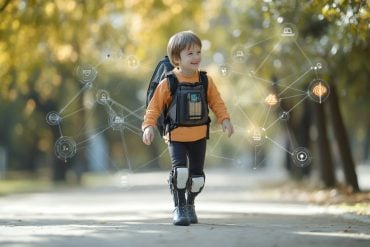Summary: Avoiding activities associated with past pain can cause individuals to shun related tasks that might be painless. This avoidance may generalize to safe activities, leading to needless abstention from valued activities.
The study conducted on healthy individuals reveals that this generalization extends to both physically similar and conceptually related tasks.
The findings highlight the need for a deeper understanding of pain avoidance to improve treatment outcomes for those with chronic pain.
Key Facts:
- The study reveals that avoidance of pain can generalize to conceptually related activities that may be performed painlessly.
- This research indicates that generalized avoidance may be based on the conceptual similarities individuals assign to tasks.
- Psychological factors, rather than physical injury severity, are better predictors of chronic pain, emphasizing the need for further exploration of pain avoidance generalization.
Source: APS
Chronic pain can seriously restrict our lives, preventing us from reaching our full professional potential, enjoying hobbies, and even participating in meaningful life events with friends and family out of fear that certain activities may lead to additional pain and suffering. Avoiding experiences associated with pain can be an adaptive behavior.
But, as Eveliina Glogan, Peixin Liu, and Ann Meulders (Maastricht University) demonstrate in a recent Psychological Science article, when we learn to avoid one activity that has caused pain in the past, it can also lead us to avoid conceptually related activities that we may be able to complete painlessly.

“When avoidance generalizes to such safe movements and activities, it can become problematic,” Glogan said in an interview.
“For example, needless avoidance can come at the cost of other valued activities, such as playing with one’s children, and can even culminate in disability due to reduced activity levels.”
This generalization can extend not only to physically similar tasks (e.g., from mopping to vacuuming) but also across entire categories of conceptually related activities, such as cleaning or sports.
Glogan, Liu, and Meulders investigated how generalized avoidance occurs in healthy individuals through a study of 40 people without chronic pain.
To establish what they consired a painful shock, each participant wore a set of two electrodes that delivered increasingly strong electric shocks. Once the participant rated the pain as an 8 out of 10 in severity (described as “significantly painful and demanding some effort to tolerate”), the shocks stopped and the practice phase of the experiment began.
During this phase, participants were instructed to complete digital “gardening” and “cleaning” tasks by using a joystick to move a tool, such as a wheelbarrow or a mop, toward an appropriate item, such as a pile of grass or puddle of water, across a computer screen.
In the first eight practice trials, participants were able to choose one of two routes to the item: a direct, efficient route that allowed them to complete the task with one movement of the joystick and a longer, inefficient route that required them to move the tool to the item twice.
In the subsequent acquisition trials, however, every time participants completed the tasks from one category (mopping and vacuuming for cleaning or raking and using a wheelbarrow for gardening), they were 80% likely to receive a painful shock while using the direct route.
But they never received a shock while using the indirect route or while completing tasks from the other category (the “safe” category). Before each trial, participants used a scale of 0 to 100 to report how painful they expected each route to be and how fearful they were of using them.
Once participants had the opportunity to learn about which tasks were likely to cause pain, they completed a generalization phase that included a mix of eight additional gardening and cleaning tasks and the same measures of expected pain and fear.
Although mopping/vacuuming or raking/wheelbarrowing using the direct route continued to result in a painful shock, participants could complete the new tasks from both categories using either route without getting zapped.
By the end of the acquisition phase, participants were more than 5 times more likely to choose the longer, pain-free route to complete tasks in which the direct route had previously resulted in them getting shocked.
Participants also reported higher pain expectations and fear in relation to the direct route before completing these tasks, and these higher pain expectations and fear extended to tasks that had never resulted in pain, albeit to a lesser extent.
This suggests that although participants had learned to fear experiencing pain on the direct route during certain tasks, they were not entirely certain that the “safe” tasks were really safe either, Glogan and colleagues wrote.
By the end of the experiment, the avoidance of previously painful actions had also generalized to other tasks in the same category even though using the direct route to complete these tasks never resulted in experiencing pain.
Overall, participants were 1.8 times more likely to take the indirect route when completing new tasks from the same category as previously painful tasks—for example, cleaning activities like washing dishes or dusting if taking the direct path to mopping and vacuuming had previously caused them pain—than they were during new tasks from the safe category.
Additionally, participants reported fearing and expecting more pain from the direct route during the new tasks from the pain-associated category than from the safe category.
They also reported higher fear and pain expectations related to taking the direct route during the new tasks from the safe category than during familiar safe tasks.
Although Glogan and colleagues’ previous research supports the view that people generalize pain expectations across categories of activities according to their perceptual similarities, this research suggests that generalized avoidance may also be based on the conceptual similarities individuals assign to tasks, Glogan explained in the interview.
This amounts to the difference between perceptually linking vacuuming and mopping because they involve physically similar movements and conceptually linking mopping, dishwashing, and dusting because they are related to the same category—cleaning.
Psychological factors, rather than physical ones like the severity of an injury, have been shown to be the best predictors of which patients will experience chronic pain, Meulders said in a separate interview, so increasing our understanding of how pain avoidance generalizes could help improve treatment outcomes.
“Fears and avoidant behavior can spread in idiosyncratic ways, and it’s so important to tap into those semantic networks and find out the specific categories that people have if you want to treat them,” Meulders added.
Future work is needed to explore how these findings may apply to people with chronic pain, who are thought to generalize pain avoidance more broadly than healthy individuals, Glogan and Meulders said.
About this pain and psychology research news
Author: Leah Thayer
Source: APS
Contact: Leah Thayer – APS
Image: The image is credited to Neuroscience News
Original Research: Open access.
“Generalization of costly pain-related avoidance based on real-life categorical knowledge” by Eveliina Glogan et al. Psychological Science
Abstract
Generalization of costly pain-related avoidance based on real-life categorical knowledge
Avoiding activities posing bodily threat is adaptive. However, spreading of avoidance to safe activities may cause functional disability in people with chronic pain.
We investigated whether costly pain-related avoidance would generalize from one activity to another on the basis of real-life categorical knowledge in 40 pain-free people (30 female; mean age = 25 years; university students and public of Maastricht, The Netherlands). In a computer task, participants moved a joystick to complete activities from two categories (gardening and cleaning).
During activities from the avoidance category, pain could be avoided at the cost of task efficiency by deviating from a short, pain-associated joystick movement. Activities from the safe category were never painful. Subsequently, we tested generalization of avoidance to novel pain-free activities from both categories.
Participants generalized avoidance to novel activities from the avoidance category despite the novel activities not being paired with pain and despite avoidance costs, suggesting that costly (pain-related) avoidance generalizes from one activity to another on the basis of category knowledge and can thus be wide reaching, creating detrimental consequences.







